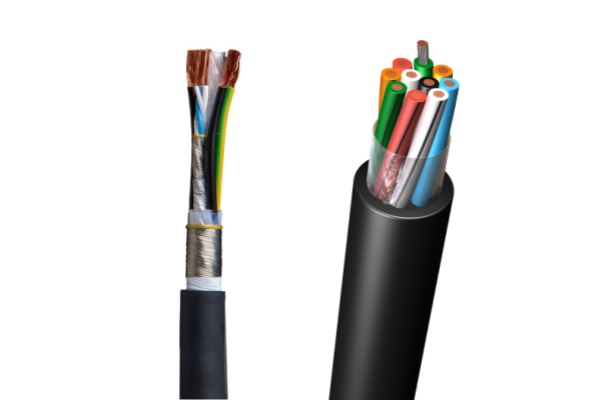制御ケーブルは産業用途に不可欠なコンポーネントです, コミュニケーションを促進する, 信号伝送, 機械と自動化システム間の制御. これらのケーブルがないと, 現代の産業は効率的または安全に機能しないでしょう. これらの特殊なケーブルは、干渉を最小限に抑えて電気信号を伝送するように設計されています。, 多様な環境にわたって正確な動作を保証する, 工場の現場から過酷な屋外環境まで.
この記事では, VERI Cable は、産業用途で使用される一般的なタイプの制御ケーブルを調査します。, デザインに焦点を当てて, 材料, それぞれのタイプが最適な特定の環境. さまざまな種類を理解することで、, 企業はパフォーマンスを最適化するために情報に基づいた意思決定を行うことができます, ダウンタイムを削減する, 安全性を高める.
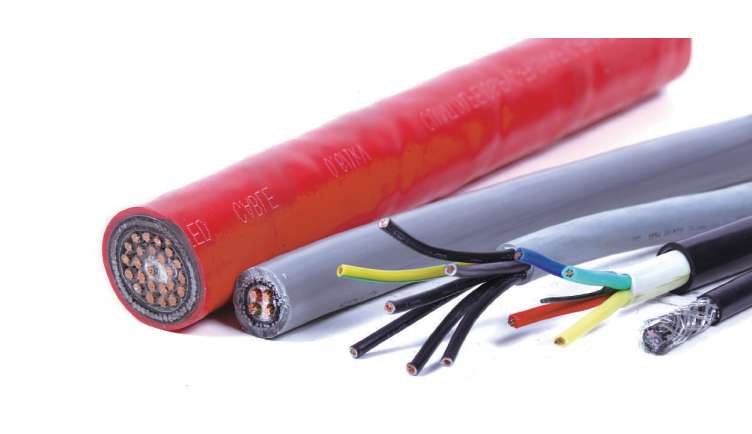
コントロールケーブルとは?
制御ケーブルは、機器の制御と調整のための低電圧信号を伝送するように設計された多芯ケーブルです。. これらのケーブルは通常、オートメーションで使用されます, 製造業, エネルギー, 交通機関, 精密な制御が不可欠なその他の産業.
電源ケーブルとは異なります, 電流を流すことを目的としている, 信号の完全性と最小限の干渉に重点を置いているという点で、. の 制御ケーブルの絶縁とシールド 信号の劣化や電気的ノイズ干渉を発生させずに確実に信号を伝送するために重要です。.
今, 産業用途で一般的に使用されるさまざまなタイプの制御ケーブルを見てみましょう:
1. PVC制御ケーブル
概要:
ポリ塩化ビニル (PVC) 多用途性と費用対効果の高さにより、制御ケーブルに最も広く使用されている材料の 1 つです。. PVC 制御ケーブルは通常、適度な機械的および化学的保護が必要な産業環境で使用されます。.
主な特徴:
- 柔軟性: PVC ケーブルは高い柔軟性を提供します, 頻繁に曲げたり動かしたりする必要がある設置に最適です。.
- 温度耐性: PVC 制御ケーブルは通常、-10°C ~ 70°C の温度範囲内で動作します。, 屋内および制御された環境に適したものにする.
- 費用対効果が高い: これらのケーブルは比較的安価で、さまざまな産業用タスクに適切なパフォーマンスを提供します。.
一般的なアプリケーション:
- 自動化システム
- コンベヤシステム
- 包装機械
- 産業用ロボット
PVC コントロール ケーブルは、乾燥した環境またはわずかに湿った環境で最も効果的であり、軽い機械的ストレスの用途に使用できます。. 広く使われている一方で、, PVC ケーブルの耐油性や耐薬品性は限られています, そのため、特定の過酷な環境には適さない可能性があります.
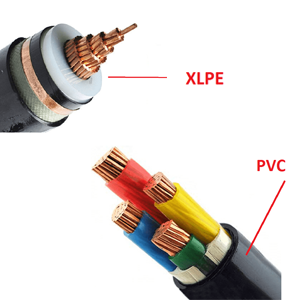
2. PUR コントロールケーブル
概要:
ポリウレタン (PUR) コントロールケーブルは優れた耐久性と耐摩耗性で知られています, 油, 化学物質と. PUR コントロール ケーブルは、高い機械的ストレスや過酷な環境に耐えられるように設計されています。, より要求の厳しい産業用途での一般的な選択肢となっています.
主な特徴:
- 高い耐久性: PUR ケーブルは機械的摩耗に対する耐性が高い, ケーブルが摩耗にさらされる環境に適しています。, 油, およびその他の化学物質.
- 温度範囲: これらのケーブルは、PVC ケーブルよりも広い温度範囲で動作できます。, 通常 -40°C ~ 90°C.
- 環境要因に対する耐性: PURコントロールケーブルは耐油性に優れています, グリース, そしてオゾンさえも, 化学的に攻撃的な環境での使用に最適です。.
一般的なアプリケーション:
- 工作機械
- 建設機械
- 石油・ガス産業
- 屋外自動化システム
これらのケーブルは、高い機械的ストレスが予想される用途に適しています。, チェーンをドラッグするなど, モバイルオートメーションシステム, 過酷な産業環境.
3. シールド付きコントロールケーブル
概要:
シールドされたコントロール ケーブルは、電磁干渉の多い環境で信号の完全性を保護するように設計されています。 (EMI) または無線周波数干渉 (情報提供依頼). これらのケーブルにはシールド層が付いています。, 通常はアルミホイルや銅編組などの材料で作られています, 信号ノイズと干渉を軽減します。.
主な特徴:
- 電磁保護: シールドされたコントロール ケーブルは、近くの電気機器からの干渉をブロックして信号の整合性を維持するように特別に設計されています。.
- さまざまなシールドオプション: これらのケーブルにはフォイルシールドが使用されている場合があります, 編組シールド, または両方の組み合わせ, 必要な保護レベルに応じて.
- 信号精度: シールド付きケーブルは、高感度システムで制御信号の精度を維持するために不可欠です.
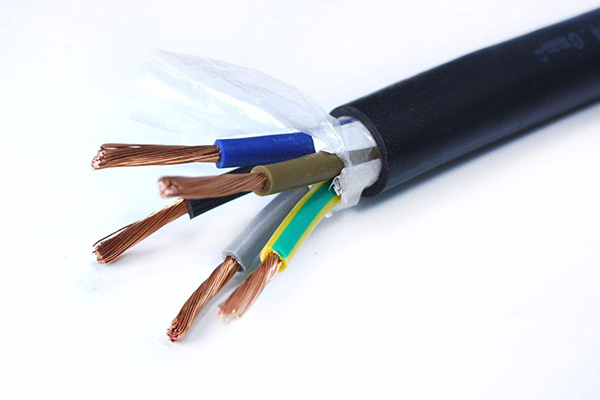
一般的なアプリケーション:
- 産業オートメーション
- CNC機械
- ロボット工学
- HVAC システム
電力ケーブルや重機の近くで高感度の制御システムが動作する産業, シールドされた制御ケーブルは、信号の劣化を回避し、システムの信頼性を確保するために不可欠です.
4. 計装制御ケーブル
計装制御ケーブルは、プロセス制御にとって正確で信頼性の高い信号伝送が重要な場合に使用されます。. これらのケーブルは、低電圧信号を処理するように特別に設計されており、精度とデータの整合性が重要な業界で一般的に使用されています。, 石油化学などの, 発電, および製薬産業.
主な特徴:
- 信号の精度: これらのケーブルは、信号を劣化させることなく長距離にわたって低電圧信号を正確に伝送することを保証します。.
- シールド設計: 電磁干渉を最小限に抑えるには, 多くの場合、計装ケーブルはシールドされています.
- 複数のペアの設計: これらのケーブルには通常、複数の導体のペアが付属しています, 複数の信号を同時に送信できるようにする.
一般的なアプリケーション:
- 発電所
- 石油化学精製所
- 医薬品製造
- 環境監視システム
計装ケーブルは制御システムのスムーズな動作に不可欠です, 特に厳しい規制要件と機密性の高いプロセスを伴う業界では.
5. フレキシブル制御ケーブル
柔軟な制御ケーブルは、動的なアプリケーションでも信号の完全性を維持できるように設計されています。, 絶え間ない動きや振動が発生する場所. これら ケーブルは産業で使用されています 機械が絶えず動いている場所, 自動化などの, ロボット工学, およびマテリアルハンドリングシステム.
主な特徴:
- 高い柔軟性: これらのケーブルは柔軟な素材で設計されています, 細いより線銅導体や柔らかい絶縁体など, 頻繁な曲げに耐える, ねじる, そして動き.
- 耐摩耗性: フレキシブル制御ケーブルの外側シースは、多くの場合、機械的磨耗に耐えられる素材で作られています。.
- 温度と耐環境性: これらのケーブルはさまざまな温度で動作でき、多くの場合、油や化学物質に対して耐性があります。.
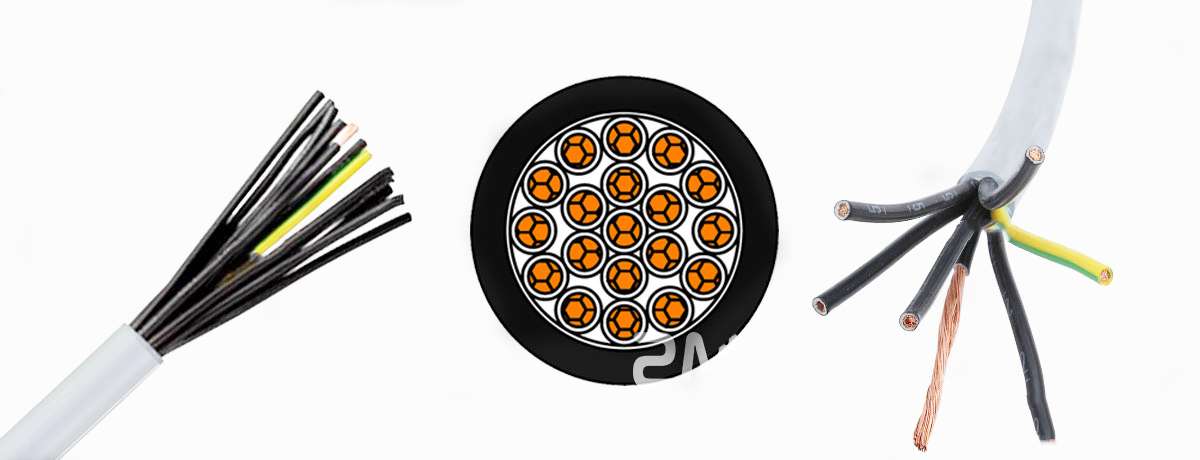
一般的なアプリケーション:
- コンベヤシステム
- 産業用ロボット
- ダイナミックな生産ライン
- 包装およびラベル貼付機械
これらのケーブルは柔軟性があるため、破損や信号損失のリスクなく可動部品を備えた機械に使用できます。.
6. ハロゲンフリー制御ケーブル
ハロゲンフリーの制御ケーブルは、火災時の有毒ガスの放出を最小限に抑えるように設計されています。. これらのケーブルは塩素などのハロゲンを含まずに作られています。, 臭素, またはフッ素, 燃やすと有害なガスが発生する可能性がある. 厳しい火災安全基準を持つ業界では、ハロゲンフリー ケーブルの重要性がますます高まっています, 交通機関など, データセンター, そして商業ビル.
主な特徴:
- 火災安全: ハロゲンフリー ケーブルは、低煙でハロゲンガスを排出しないように設計されています。, 火災の際の安全性を高める.
- 環境上の利点: これらのケーブルは環境に優しく、多くのグリーンビルディング規制に準拠しています。.
- 耐久性: ハロゲンフリーであるにも関わらず、, これらのケーブルは堅牢な機械的保護を提供し、中程度の環境ストレスに耐えることができます。.
一般的なアプリケーション:
- 鉄道システム
- データセンター
- 商業ビル
- 公共インフラプロジェクト
火災安全が重要な産業において, ハロゲンフリーの制御ケーブルが役立ちます 緊急時に有毒物質にさらされるリスクを最小限に抑える.
7. VFD (可変周波数ドライブ) ケーブル
概要:
可変周波数ドライブ (VFD) ケーブルは、モーターを可変周波数ドライブに接続するために使用される特殊な制御ケーブルです。. これらのケーブルは、モーター駆動アプリケーションで一般的に見られる高レベルの電気ノイズや過酷な条件に耐えるように設計されています。.
主な特徴:
- 耐ノイズ性: VFD ケーブルは、モータードライブによって生成される高レベルの電気ノイズに対処できるように設計されています。, 信号の完全性を確保する.
- 耐熱性と耐湿性: これらのケーブルは多くの場合、熱や湿気に耐えるように作られています。, VFD システムは動作中に両方の物質を大量に生成する可能性があるため、.
- 堅牢な構造: VFD ケーブルは多くの場合、産業環境での高電力需要と過酷な条件に対応するためにシールドされ、強化絶縁で構築されています。.
一般的なアプリケーション:
- モータードライブ
- コンベヤベルト
- HVAC システム
- ポンプ場
VFD ケーブルにより、スムーズで効率的なモーター動作が保証されます, 特に正確なモーター制御を必要とする産業用アプリケーションでは.
8. トレイケーブル
トレイケーブルはトレイに取り付けるように設計されています, 導管, 産業環境のダクト. これらのケーブルは耐久性に優れていることで知られています, 取り付けの容易さ, さまざまな電気的および機械的ストレスに対処する能力.
主な特徴:
- 多彩な設置方法: トレイケーブルはさまざまな方法で取り付け可能, オープンエアも含めて, ダクト, と導管.
- 高抵抗: これらのケーブルは耐油性があります, 化学薬品, そして湿気, 過酷な環境に適したものにする.
- 複数の導体: トレイ ケーブルには通常、複数の導体が付属しています, 電力と制御信号の両方の送信が可能.
一般的なアプリケーション:
- 発電所
- 化学プラント
- 排水処理施設
- 製造工場
トレイ ケーブルは、機械やオートメーション システムを操作するために複雑な制御システムや電力システムが必要な産業プラントで広く使用されています。.
9. 装甲制御ケーブル
装甲制御ケーブルは、高度な機械的保護が必要な用途向けに設計されています. これらのケーブル 追加の装甲層が特徴です, 通常はスチールワイヤーまたはテープで作られています, ケーブルを外部損傷から保護します。.
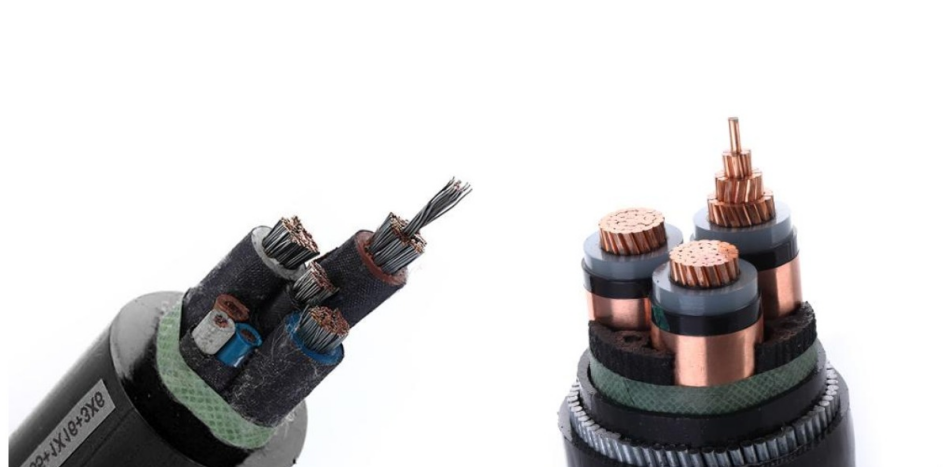
主な特徴:
- 強化された保護: 外装層がケーブルの潰れを防ぎます, インパクト, およびその他の形態の機械的ストレス.
- 耐薬品性: 装甲制御ケーブルは多くの場合、耐油性を高めて作られています, 化学薬品, そして湿気.
- 耐久性: これらのケーブルは過酷な環境に耐えられるように設計されています, 屋内でも屋外でも.
一般的なアプリケーション:
- マイニング
- 石油とガス
- 建設現場
- 重工業用途
外装された制御ケーブルは、ケーブルが潜在的な物理的損傷にさらされる環境に不可欠です, 過酷な条件下でも継続稼働を保証.
制御ケーブルは産業システムのスムーズな動作に不可欠です. 基本的なオートメーションで使用される PVC 制御ケーブルから、最も過酷な条件向けに設計された装甲ケーブルや VFD ケーブルまで, それぞれのタイプは産業プロセスの最適化において特定の役割を果たします. 制御ケーブルの一般的なタイプを理解する, 彼らのアプリケーション, 主要な特性は、業界が特定のニーズに合わせて適切なケーブルを選択するのに役立ちます, 安全性の向上, 効率, 運用全体にわたる信頼性と信頼性.
今日のペースの速い産業環境において, 適切なコントロール ケーブルの選択は、パフォーマンスだけを重視するわけではありません; また、潜在的なリスクに対する将来の備えや、業界規制の遵守を確保することも重要です。. 適切なケーブルを使用する場合, 業界はダウンタイムを最小限に抑えることができます, コストを削減する, 人員と設備の両方の安全を確保します.
